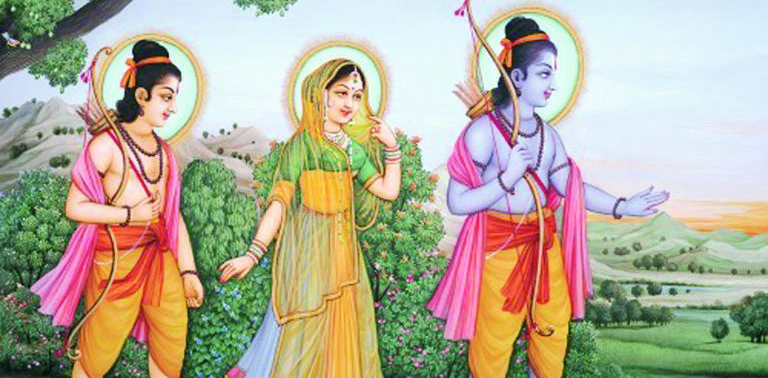Bhagwan Ram Chandra Prabhu
 Bhagwan Ram Chandra Prabhu is the seventh avatar of the Bhagwan Vishnu. He is one of the most widely worshipped deities in Sanatana Hindu Dharma and worshipped by almost all sects of Hinduism – Vaishnavites, Shaivites, Shaktas, etc. He is considered the embodiment of all great virtues – maryada purushottama – the best of upholders of Dharma.
Bhagwan Ram Chandra Prabhu is the seventh avatar of the Bhagwan Vishnu. He is one of the most widely worshipped deities in Sanatana Hindu Dharma and worshipped by almost all sects of Hinduism – Vaishnavites, Shaivites, Shaktas, etc. He is considered the embodiment of all great virtues – maryada purushottama – the best of upholders of Dharma.
The Ramacharitmanas is notable for being the Rama-based play commonly performed every year in autumn, during the weeklong performance arts festival of Ramlila.[15]The “staging of the Ramayana based on the Ramacharitmanas” was inscribed in 2008 by UNESCO as one of the Intangible Cultural Heritages of Humanity.[81]
Rama was born to Kaushalya and Dasharatha in Ayodhya, the ruler of the Kingdom of Kosala. His siblings included Lakshmana, Bharata, and Shatrughna. He married Sita. Though born in a royal family, their life is described in the Hindu texts as one challenged by unexpected changes such as an exile into impoverished and difficult circumstances, ethical questions and moral dilemmas.[7] Of all their travails, the most notable is the kidnapping of Sita by demon-king Ravana, followed by the determined and epic efforts of Rama and Lakshmana to gain her freedom and destroy the evil Ravana against great odds. The entire life story of Rama, Sita and their companions allegorically discusses duties, rights and social responsibilities of an individual. It illustrates dharma and dharmic living through model characters.[7][8]
Rama is especially important to Vaishnavism. He is the central figure of the ancient Hindu epic Ramayana, a text historically popular in the South Asian and Southeast Asian cultures.[9][10][11] His ancient legends have attracted bhasya (commentaries) and extensive secondary literature and inspired performance arts. Two such texts, for example, are the Adhyatma Ramayana – a spiritual and theological treatise considered foundational by Ramanandi monasteries,[12] and the Ramcharitmanas – a popular treatise that inspires thousands of Ramlila festival performances during autumn every year in India.[13][14][15]
Rama legends are also found in the texts of Jainism and Buddhism, though he is sometimes called Pauma or Padma in these texts,[16] and their details vary significantly from the Hindu versions.[17]